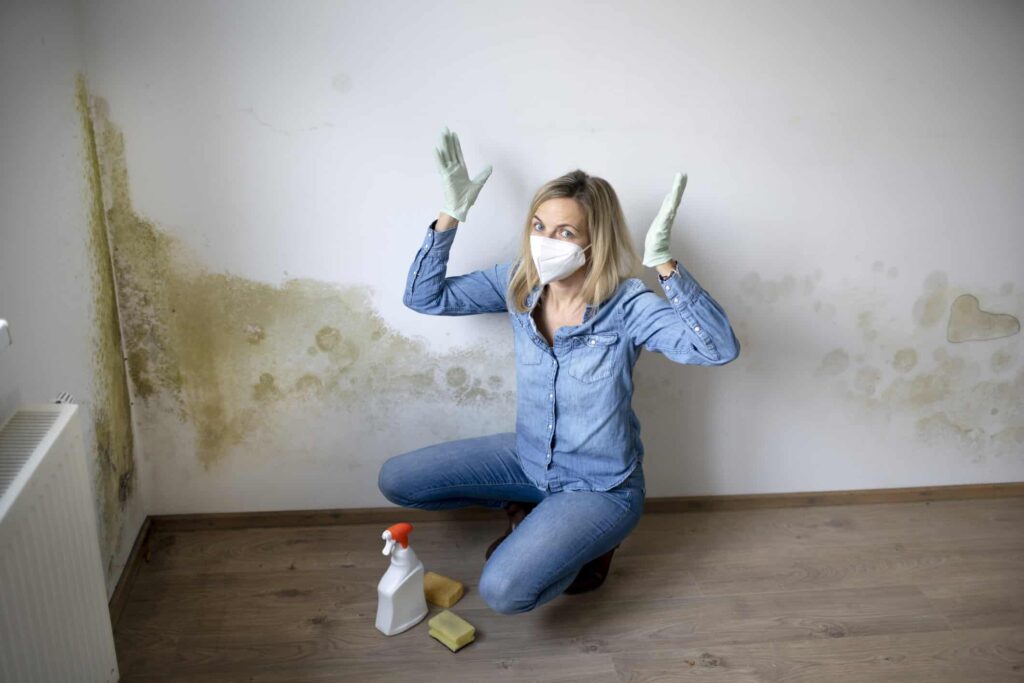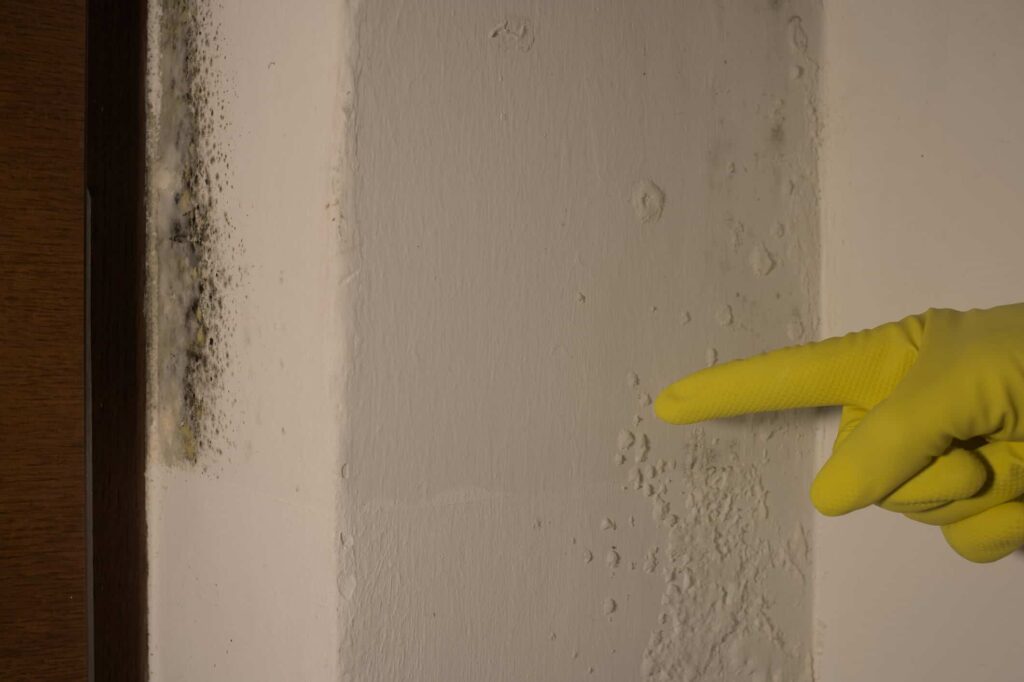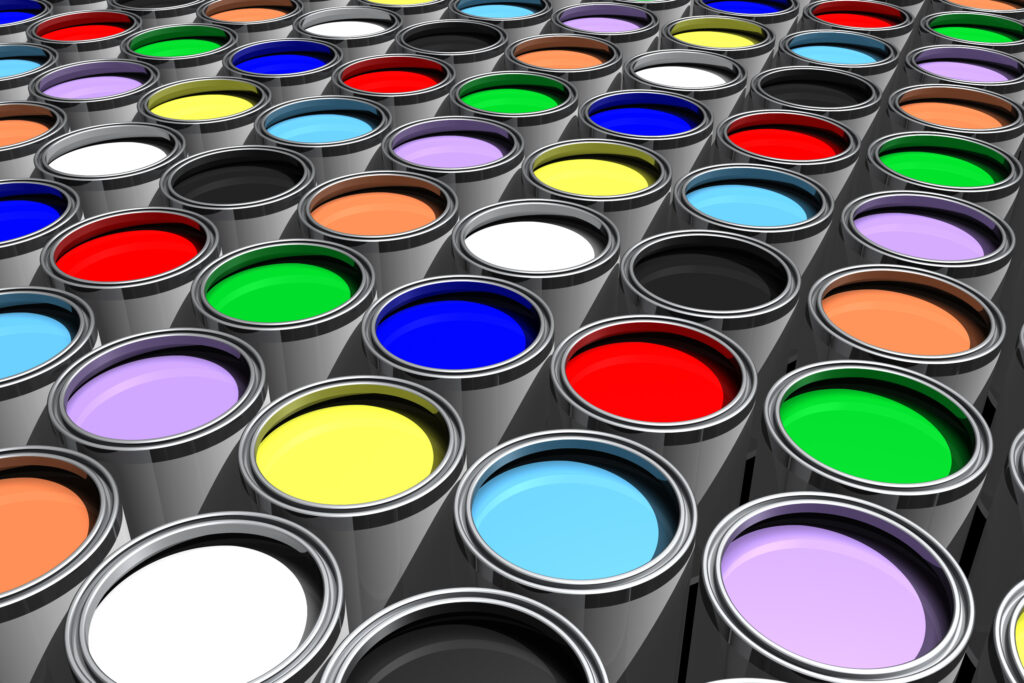When it comes to home renovations, a common and crucial question many homeowners pose to interior painters is “Can you paint over mold?” This query isn’t just about aesthetics; it’s deeply rooted in the overall well-being and safety of your living space. In this comprehensive blog post, we delve into the significant implications of painting over mold and outline the correct measures to address this issue effectively.
You’ll gain valuable insights into identifying mold, understanding its impact on your home and health, and learning why simply painting over it is not a viable solution. Additionally, we’ll guide you through the necessary steps to properly treat mold before considering any paintwork. This information is crucial for anyone looking to maintain or improve their home in a way that is both safe and visually appealing.
Can You Paint Over Mold?

Mold in Your Home: Should You Just Ignore It?
Mold is far more than a mere aesthetic concern; it’s a significant health hazard and an indicator of underlying issues in your home. Typically found in moist, poorly ventilated areas, mold can wreak havoc not only on your home’s surfaces but also on the health of its occupants.
When mold appears, it’s often a sign that there’s excess moisture or water damage somewhere in your home. This could be due to leaking pipes, condensation, or poor ventilation, especially in areas like bathrooms, kitchens, and basements. Ignoring mold can lead to its proliferation, which in turn causes more extensive damage to your home. It can eat away at walls, ceilings, and floorings, leading to costly repairs.
Health-wise, the risks associated with mold are not to be underestimated. Exposure to mold can cause a variety of health issues, particularly for those with allergies or asthma. Symptoms can range from nasal stuffiness, throat irritation, coughing or wheezing, to eye irritation or, in some cases, skin irritation. For those with mold allergies, reactions can be more severe.
The presence of mold can also lower your home’s value. If you’re planning to sell your home, potential buyers might be put off by the sight and risks of mold. This makes it not just a health and aesthetic issue, but a financial one as well.
Therefore, addressing mold promptly and effectively is crucial. Understanding its causes, the risks it poses, and how to properly treat it, is essential for maintaining a healthy, safe, and appealing home environment. Ignoring mold is not just overlooking a cosmetic flaw; it’s neglecting the health of your home and those who live in it.
Can Painting Over Mold Solve the Problem?
The short answer is no, painting over mold is not a solution. While it’s tempting to think a quick coat of paint can hide mold problems, this approach is merely cosmetic and can actually lead to more significant issues down the line. Paint might temporarily mask the mold, but it does nothing to address the root cause: the moisture that led to the mold growth in the first place.
Mold thrives in damp conditions, and simply covering it with paint creates an environment where the mold can continue to grow undetected. Over time, this can lead to the deterioration of wall materials and even affect the structural integrity of your home. Furthermore, painting over mold doesn’t neutralize the mold spores. The health risks associated with mold exposure – such as respiratory problems and allergic reactions – remain a concern, as the spores can still be released into the air.
Additionally, paint applied over mold is likely to peel or bubble, resulting in an unattractive and uneven surface. This not only looks unappealing but also signals deeper problems that could turn away potential buyers if you plan to sell your home.
In essence, while painting over mold may seem like a quick and easy fix, it’s a temporary and potentially harmful solution. To effectively and safely deal with mold, it’s necessary to eliminate the moisture source, clean and treat the affected area, and only then proceed with painting. This approach ensures a healthier living environment and preserves the integrity and appearance of your home.

Proper Steps to Address Mold Before Painting
Before even considering painting over an area affected by mold, it’s vital to tackle the problem at its root. Here are the essential steps you should follow to effectively deal with mold before painting:
- Identify and Fix the Source of Moisture: Locate the source of excess moisture in your home. This could be due to leaking pipes, condensation, or poor ventilation. Take necessary actions to fix these issues. This might involve repairing leaky faucets, improving ventilation, or using dehumidifiers in damp areas.
- Clean and Treat the Area: Thoroughly clean the mold-infested area with mold-killing products. It’s important to use cleaners specifically designed for mold removal. After cleaning, ensure the area is completely dry. This might require the use of fans or dehumidifiers to remove residual moisture.
- Consult a Professional:For extensive mold problems, or if you’re unsure about handling it yourself, it’s wise to consult a professional. Mold removal experts can assess the situation, safely remove the mold, and provide advice on preventing future growth.
Here’s a helpful video from Home Depot on how to get rid of mold:
Preparing the Surface for Painting
Once the mold has been effectively treated and removed, the next crucial step is preparing the surface for painting. This process is essential to ensure that the paint adheres properly and that the finished job looks great and lasts a long time. Here’s a detailed guide on how to prepare your walls for painting after mold removal:
- Thorough Cleaning: Begin by cleaning the surface thoroughly. After mold removal, there may be residues left behind. Use a mild detergent or a suitable cleaning solution to ensure the area is free of any mold, dust, or grease.
- Surface Repair: Check for any damage caused by the mold, such as cracks or chips in the wall. Use a suitable filler to repair these imperfections. Once the filler dries, sand the surface gently to create a smooth, even area.
- Priming the Surface: Priming is essential, especially after mold removal. Use a high-quality primer that can seal any remaining stains and provide a good base for the paint. Primers also help in preventing mold from reappearing, as many contain mold-inhibiting properties.
- Ensuring Complete Dryness: Before applying paint, ensure that the surface is completely dry. Any remaining moisture can cause the paint to bubble or peel, compromising the quality of your paint job. This might mean waiting a day or two after cleaning and priming, depending on humidity and ventilation conditions.
- Final Inspection: Conduct a final inspection of the surface before painting. Look for any missed spots, uneven areas, or signs of moisture. Addressing these issues beforehand can make a significant difference in the quality of the final paint job.

Choosing the Right Paint
Selecting the appropriate paint is a critical step in ensuring the longevity and effectiveness of your painting project, especially in areas susceptible to moisture. Mold-resistant paints contain additives that inhibit the growth of mold and mildew. These additives are designed to prevent mold spores from taking root on your painted surfaces, especially in damp or humid environments like bathrooms and kitchens.
Using mold-resistant paint provides several advantages. It helps maintain a cleaner surface, reduces the likelihood of mold-related health issues, and prolongs the life of your paint job. It’s an ideal choice for areas that are frequently exposed to moisture.
While it’s particularly beneficial in moisture-prone areas, mold-resistant paint can be advantageous in any part of your home. It’s especially recommended for basements, bathrooms, kitchens, laundry rooms, and areas with poor ventilation.
Not all mold-resistant paints are created equal. Look for high-quality options that offer good coverage, durability, and effective mold resistance. It might cost a bit more, but the investment is worth it for the added protection and longevity.
Mold-resistant paints come in various finishes, such as matte, semi-gloss, and gloss. The choice of finish can affect the appearance and functionality of the paint. Glossy finishes, for example, are easier to clean and are a good choice for high-moisture areas.
For best results, apply mold-resistant paint on a clean, dry surface. Follow the manufacturer’s instructions for application and drying times. Proper application ensures maximum effectiveness of the mold-resistant properties.
Maintaining a Mold-Free Environment
Creating and maintaining a mold-free environment in your home is essential for both the health of the inhabitants and the longevity of your property. Here’s how you can maintain a mold-free environment:
Regular Inspections
Periodically inspect your home for signs of mold, especially in areas prone to moisture such as bathrooms, kitchens, basements, and attics. Look for any discoloration or musty odors, which are common indicators of mold presence.
Addressing Humidity and Leaks Promptly
High humidity levels and water leaks are the primary culprits for mold growth. Use a dehumidifier in damp areas to maintain humidity levels between 30-50%. Fix leaks in pipes, roofs, windows, or any other areas as soon as they are detected.
Proper Ventilation
Ensure your home is well-ventilated. Use exhaust fans in bathrooms and kitchens to remove moisture. Open windows when weather permits to allow fresh air circulation, which can help reduce moisture and prevent mold growth.
Drying Wet Areas Immediately
After flooding or spills, dry the affected areas within 24 to 48 hours to prevent mold from taking hold. Use fans and dehumidifiers to speed up the drying process.
Use Mold-Inhibiting Products
Consider using mold inhibitors in your paint and cleaning products. These can help prevent the growth of mold on surfaces.
Keeping the House Clean
Regular cleaning can help prevent mold spores from settling and growing. Pay special attention to bathrooms and kitchens, where mold is more likely to grow due to higher moisture levels.
Landscaping and Exterior Maintenance
Ensure that the ground outside slopes away from your house to prevent water from accumulating near your foundation. Keep gutters clean to ensure proper water drainage.
Store Items Wisely
Avoid storing items in damp areas, as they can absorb moisture and become breeding grounds for mold. Use plastic storage containers instead of cardboard boxes in basements or attics.
Conclusion
While painting over mold might seem like a quick fix, it’s important to address the root cause first. If you’re unsure about how to proceed, professional guidance is always recommended.
At A New View Painting, we understand the importance of not just a beautiful paint job, but also a safe and healthy home environment. Our team ensures that all surfaces are properly treated for mold before painting.
For reliable and expert painting services in Erie and the surrounding areas, call us today at (970) 660-3993.



